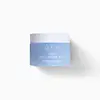What's inside
What's inside
 Key Ingredients
Key Ingredients

 Benefits
Benefits

 Concerns
Concerns

 Ingredients Side-by-side
Ingredients Side-by-side

Water
Skin ConditioningGlycerin
HumectantDimethicone
EmollientCetearyl Olivate
Sorbitan Olivate
EmulsifyingSodium Hyaluronate
HumectantSerine
MaskingGlycine
BufferingAlanine
MaskingThreonine
Arginine
MaskingProline
Skin ConditioningLysine Hcl
Skin ConditioningGlutamic Acid
HumectantSodium PCA
HumectantPCA
HumectantSodium Lactate
BufferingUrea
BufferingSodium Chloride
MaskingCitric Acid
BufferingBetaine
HumectantAllantoin
Skin ConditioningFructose
HumectantMaltose
MaskingTrehalose
HumectantGlucose
HumectantPentylene Glycol
Skin ConditioningSynthetic Beeswax
Emulsion StabilisingPolyacrylate Crosspolymer-6
Emulsion StabilisingDimethicone Crosspolymer
Emulsion StabilisingDimethiconol
EmollientEthylhexylglycerin
Skin ConditioningCaprylyl Glycol
EmollientSodium Hydroxide
BufferingWater, Glycerin, Dimethicone, Cetearyl Olivate, Sorbitan Olivate, Sodium Hyaluronate, Serine, Glycine, Alanine, Threonine, Arginine, Proline, Lysine Hcl, Glutamic Acid, Sodium PCA, PCA, Sodium Lactate, Urea, Sodium Chloride, Citric Acid, Betaine, Allantoin, Fructose, Maltose, Trehalose, Glucose, Pentylene Glycol, Synthetic Beeswax, Polyacrylate Crosspolymer-6, Dimethicone Crosspolymer, Dimethiconol, Ethylhexylglycerin, Caprylyl Glycol, Sodium Hydroxide
Water
Skin ConditioningButylene Glycol
Humectant1,2-Hexanediol
Skin ConditioningSodium Hyaluronate
HumectantHydrolyzed Hyaluronic Acid
HumectantSodium Acetylated Hyaluronate
HumectantCetearyl Olivate
Sorbitan Olivate
EmulsifyingHelianthus Annuus Seed Oil
EmollientZea Mays Starch
AbsorbentMannitol
HumectantMicrocrystalline Cellulose
AbsorbentTocopheryl Acetate
AntioxidantCI 77007
Cosmetic ColorantHydrogenated Lecithin
EmulsifyingCaprylyl Glycol
EmollientEthylhexylglycerin
Skin ConditioningDisodium EDTA
Persea Gratissima Oil
Skin ConditioningBetaine
HumectantTromethamine
BufferingCarbomer
Emulsion StabilisingAcrylates/C10-30 Alkyl Acrylate Crosspolymer
Emulsion StabilisingParfum
MaskingXylitylglucoside
HumectantAnhydroxylitol
HumectantXylitol
HumectantGlucose
HumectantGossypium Herbaceum Seed Extract
Skin ConditioningWater, Butylene Glycol, 1,2-Hexanediol, Sodium Hyaluronate, Hydrolyzed Hyaluronic Acid, Sodium Acetylated Hyaluronate, Cetearyl Olivate, Sorbitan Olivate, Helianthus Annuus Seed Oil, Zea Mays Starch, Mannitol, Microcrystalline Cellulose, Tocopheryl Acetate, CI 77007, Hydrogenated Lecithin, Caprylyl Glycol, Ethylhexylglycerin, Disodium EDTA, Persea Gratissima Oil, Betaine, Tromethamine, Carbomer, Acrylates/C10-30 Alkyl Acrylate Crosspolymer, Parfum, Xylitylglucoside, Anhydroxylitol, Xylitol, Glucose, Gossypium Herbaceum Seed Extract
 Reviews
Reviews

Ingredients Explained
These ingredients are found in both products.
Ingredients higher up in an ingredient list are typically present in a larger amount.
Betaine is a common humectant (a substance that promotes retention of moisture). It's known to be gentle on the skin and can help balance hydration.
This ingredient is best for improving hydration and soothing irritated skin. Studies also show it helps even out skin tone.
Fun fact: Betaine is naturally created in the skin and body. The kind found within cosmetic products can be either plant-derived or synthetic.
Another name for betaine is trimethylglycine.
Learn more about BetaineCaprylyl Glycol is a humectant and emollient, meaning it attracts and preserves moisture.
It is a common ingredient in many products, especially those designed to hydrate skin. The primary benefits are retaining moisture, skin softening, and promoting a healthy skin barrier.
Though Caprylyl Glycol is an alcohol derived from fatty acids, it is not the kind that can dry out skin.
This ingredient is also used as a preservative to extend the life of products. It has slight antimicrobial properties.
Learn more about Caprylyl GlycolCetearyl Olivate is an emulsifier and texture enhancer. It is derived from the fatty acids of olive oil and Cetearyl alcohol, and is biodegradable.
As an emulsifier, it is used to prevent oils and waters from separating. It can also
Manufacturers use the name Olivem 1000. This ingredient has been found to preserve the natural microbiome of skin. Having a healthy microbiome helps keep our skin healthy and protects against harmful bacteria. This ingredient is grouped with Sorbitan Olivate under the name Olivem 1000.
Learn more about Cetearyl OlivateEthylhexylglycerin (we can't pronounce this either) is commonly used as a preservative and skin softener. It is derived from glyceryl.
You might see Ethylhexylglycerin often paired with other preservatives such as phenoxyethanol. Ethylhexylglycerin has been found to increase the effectiveness of these other preservatives.
Glucose is a simple sugar and is the most important source of energy in all organisms.
In skincare, glucose is used to hydrate the skin. It also acts as a prebiotic for our natural biome.
Glucose is hydrating due to its humectant property. As a humectant, glucose draws moisture from the air and from deeper levels in the skin.
Our skin contains many sugars that act as prebiotics and help strengthen our natural microbiome. Having a healthy microbiome helps protect our skin from harmful bacteria and other contaminants.
Studies show glucose may help with fading discoloration and pigmentation. This is because our skin metabolizes glucose into lactic acid. Lactic acid is an AHA that helps exfoliate the top layer of skin.
Learn more about GlucoseSodium Hyaluronate is hyaluronic acid's salt form. It is commonly derived from the sodium salt of hyaluronic acid.
Like hyaluronic acid, it is great at holding water and acts as a humectant. This makes it a great skin hydrating ingredient.
Sodium Hyaluronate is naturally occurring in our bodies and is mostly found in eye fluid and joints.
These are some other common types of Hyaluronic Acid:
Learn more about Sodium HyaluronateSorbitan Olivate is created from the fatty acids in olive oil and sorbitol.
This ingredient is an oil in water emulsifier. It helps stabilize a product by preventing oils and waters from separating. Sorbitan Olivate also helps hydrate the skin.
Manufacturers sell sorbitan olivate under the name OliveM 1000. OliveM 1000 a multifunctional ingredient. It is self-emulsifying. According to a manufacturer, OliveM 1000 does not disrupt natural skin biome.
Due to its olive oil base, this ingredient may not be fungal-acne safe.
Learn more about Sorbitan OlivateWater. It's the most common cosmetic ingredient of all. You'll usually see it at the top of ingredient lists, meaning that it makes up the largest part of the product.
So why is it so popular? Water most often acts as a solvent - this means that it helps dissolve other ingredients into the formulation.
You'll also recognize water as that liquid we all need to stay alive. If you see this, drink a glass of water. Stay hydrated!
Learn more about Water